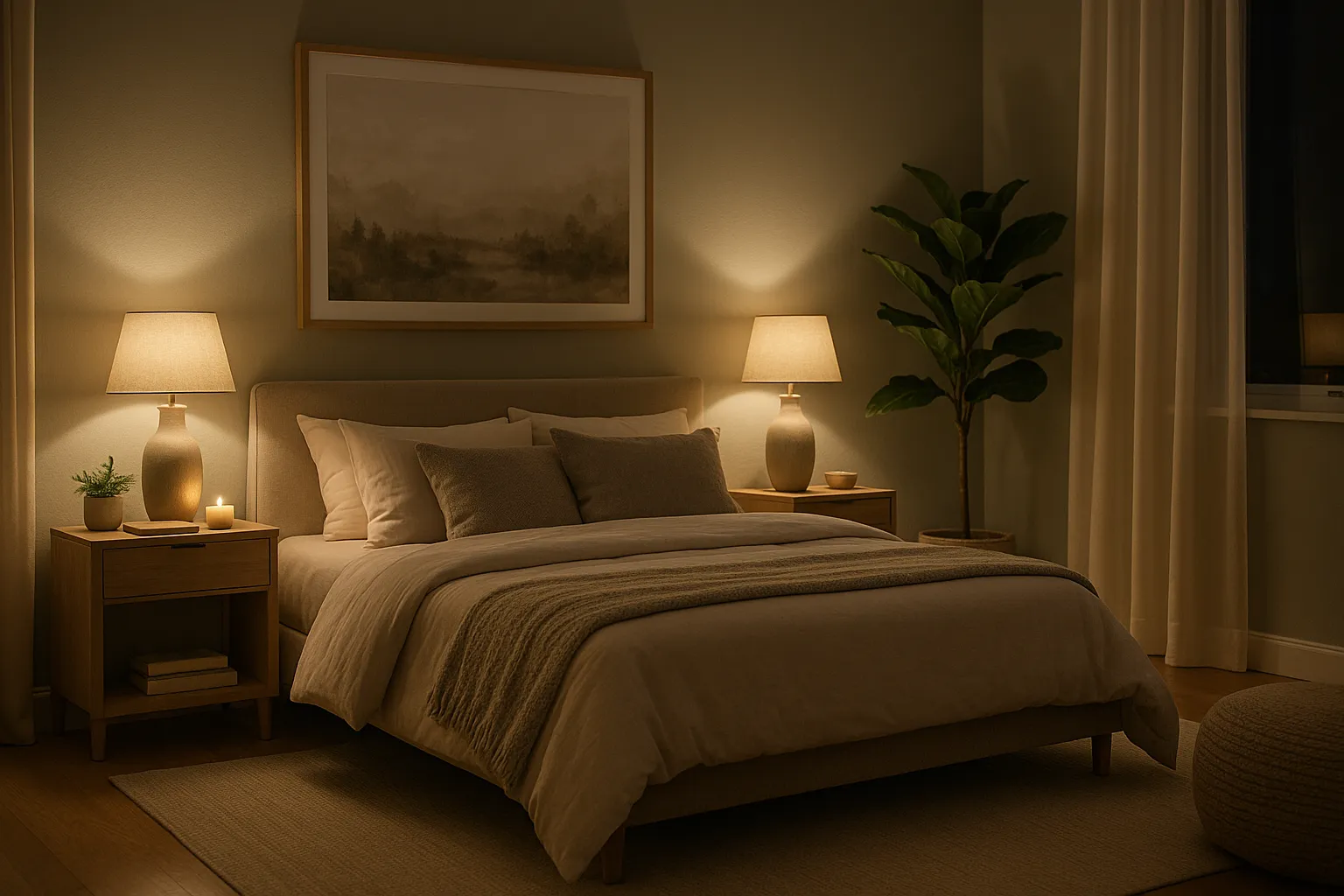Your bedroom is more than just a place to sleep—it’s your sanctuary, a retreat where you recharge your mind and body. A well-decorated bedroom can help you sleep better, feel more relaxed, and wake up refreshed. The right design choices promote calmness and reduce distractions, turning your room into a restful haven. In this guide, we’ll walk through how to decorate your bedroom with a focus on comfort, simplicity, and better sleep.
Choose a Calming Color Palette
Color has a significant impact on mood and sleep quality. For a relaxing bedroom environment, opt for soft, soothing shades.
Best Bedroom Colors:
- Blues: Known for their calming effect—ideal for walls or bedding.
- Greens: Evoke nature and balance—great for a refreshing feel.
- Neutrals: Soft grays, beiges, and off-whites create a clean and cozy backdrop.
- Lavenders or dusty pinks: Add a gentle, relaxing tone without being too bold.
Avoid overly bright or stimulating colors like red or neon tones—they can energize rather than soothe.
Invest in Comfortable Bedding
High-quality bedding is one of the best investments for better sleep. Choose breathable, soft materials that keep you comfortable throughout the night.
Bedding Tips:
- Opt for natural fabrics like cotton, linen, or bamboo.
- Choose a duvet or comforter with the right warmth for your climate.
- Use multiple pillows to support your preferred sleeping position.
- Layer throws and blankets for extra coziness and a designer look.
Stick with calming patterns or solid colors to avoid visual clutter.
Limit Clutter and Embrace Minimalism
Cluttered bedrooms can lead to a cluttered mind. Reducing visual noise helps your brain wind down at the end of the day.
Decluttering Tips:
- Keep only essential furniture—bed, nightstands, dresser.
- Use closed storage to hide away personal items and clothes.
- Store extra bedding or seasonal items in under-bed containers.
- Use baskets or decorative boxes for quick access to essentials.
A simple, clean space encourages relaxation and reduces stress.
Block Out Light with Curtains or Shades
Exposure to light—especially artificial light—can disrupt your body’s natural sleep cycle. Ensure your room can become dark and restful when it’s time to sleep.
Window Treatment Ideas:
- Use blackout curtains or lined drapes to block morning light.
- Install layered window coverings (like shades and curtains) for flexibility.
- Choose soft, neutral-colored curtains to maintain a soothing feel.
Don’t forget to reduce screen light from electronics before bedtime too.
Control the Temperature and Airflow
Temperature and air quality play a major role in sleep quality. Your decor choices can support a healthier environment.
Cooling Decor Tips:
- Use breathable bedding and moisture-wicking sheets.
- Add a ceiling fan or quiet standing fan for air circulation.
- Choose lightweight curtains for better airflow.
- Keep plants like snake plants or peace lilies to purify air naturally.
A cool, fresh room supports deeper, more restful sleep.
Use Soft, Layered Lighting
Bright or overhead lighting can be too harsh at night. Layering different light sources allows you to adjust the ambiance for reading, relaxing, or sleeping.
Lighting Suggestions:
- Use bedside lamps with warm white bulbs (2700K or lower).
- Add dimmer switches for main lights to adjust brightness.
- Try wall sconces or pendant lights if table space is limited.
- Consider string lights or LED strips for soft accent lighting.
Avoid blue-toned bulbs in the evening—they can interfere with melatonin production.
Incorporate Natural Elements
Bringing a touch of nature indoors can create a peaceful, grounded feeling in your bedroom.
Natural Decor Ideas:
- Use wood furniture or accents for warmth and texture.
- Add plants for air purification and beauty.
- Include textiles made from cotton, wool, or jute.
- Use neutral tones and natural materials for rugs, baskets, or lamps.
These elements help reduce stress and connect you to nature.
Keep Electronics to a Minimum
Electronics are a major source of sleep disruption. Design your bedroom to be as screen-free and technology-light as possible.
Tips for a Tech-Free Bedroom:
- Charge phones and devices outside the room.
- Use an old-fashioned alarm clock instead of your phone.
- Avoid installing a TV in the bedroom.
- Use books, not screens, for your bedtime routine.
Keeping your room tech-free reinforces it as a place of rest—not stimulation.
Add Personal Touches That Promote Calm
While minimalism is ideal for sleep, you can still add meaningful decor that supports relaxation and comfort.
Peaceful Decor Ideas:
- Display calming artwork (nature scenes, abstract soft colors).
- Use soft textiles like throws, cushions, and floor rugs.
- Add candles or essential oil diffusers with lavender, chamomile, or sandalwood scents.
- Frame a meaningful quote or photo near your bed.
Personal elements remind you that this space is yours, without overwhelming the senses.
Final Thoughts: Design for Rest and Rejuvenation
Your bedroom should be your personal sanctuary—a space designed to promote deep rest and peaceful moments. Through thoughtful decor choices, calming colors, and intentional lighting, you can create an environment that supports better sleep and more relaxation in your daily life.
Remember, better sleep starts with the space around you. Keep things soft, simple, and serene, and let your bedroom become the restful retreat you deserve.
